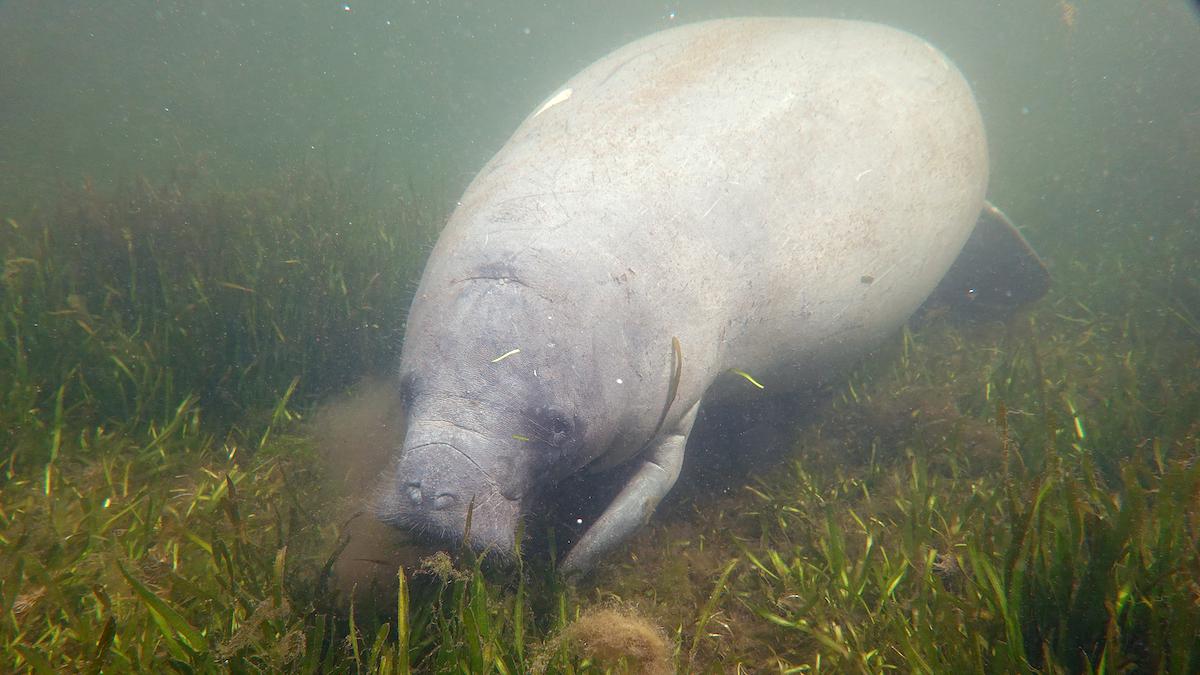

Manatees are majestic creatures, and their presence near Florida brings a lot of awe from locals and tourists alike. But worsening pollution from agricultural runoff, wastewater and other pollutants is causing one of their primary food sources — seagrass — to run scarce.
By October 2021 alone, nearly 1,000 manatees have died from food scarcity. This year’s total is slated to double 2020’s rate of manatee mortalities, which hit 593. These numbers are especially worrying compared to the previous 5-year average of 146 deaths.
Continued pollution runoff and dumping is creating algal blooms on the surface of the water. This prevents sunlight from reaching the seagrass, which needs light to live and grow. Without it, the seagrass dies off, and the manatees are left with less and less food for their own survival. Already, about 58% of seagrass has died off in the Indian River Lagoon.
Seagrasses are species of flowering marine plants with long, green leaves. They are one of the most productive and valuable ecosystems in the world. Seagrass produces oxygen and provides habitat and food for a variety of wildlife. Impressively, seagrass also captures over 80 million metric tons of carbon annually. But continued pollution from human activities is causing seagrass to die off at a rate of about two football fields per hour, according to Smithsonian Ocean.
Food scarcity isn’t the only threat to manatees, either. These creatures are often killed by boat strikes, waters that become too cold, and toxic red algal blooms. With winter just around the corner, experts are concerned to see even higher numbers of manatee deaths before year’s end.
“The cold hard fact is: Florida is at a water quality and climate crossroads, and manatees are our canary in the coal mine,” J.P. Brooker, Florida director for the Ocean Conservancy, said in The Invading Sea. “They are dying off in record numbers because we humans have made Florida waters inhospitable to them. It’s not just our manatees at risk, it’s a coast-wide ecological problem.”
Florida and U.S. government officials have started restoration projects for manatee habitats with $8 million in approved funding so far. But the work isn’t happening quickly enough, and more manatees are expected to die of starvation over the upcoming winter. The Florida Fish and Wildlife Conservation Commission is asking for another $7 million for seagrass restoration and manatee rehabilitation centers.
Manatee populations are estimated at 7,500 to 10,200 around Florida. They are currently classified as threatened, although environmentalists are pushing for the animal to be recategorized as endangered. Manatees were listed as endangered from 1966 to 2016. Florida Governor Ron DeSantis has not agreed to relist them, but has proposed a $3.8 million aid package instead.
“Florida manatees desperately need us to help them by cleaning up and protecting their habitat,” Jaclyn Lopez, Florida director and senior attorney at the Center for Biological Diversity, told The Associated Press. The organization, along with other conservation groups, are planning to sue U.S. Fish and Wildlife Service for more manatee protections.

 233k
233k  41k
41k  Subscribe
Subscribe 